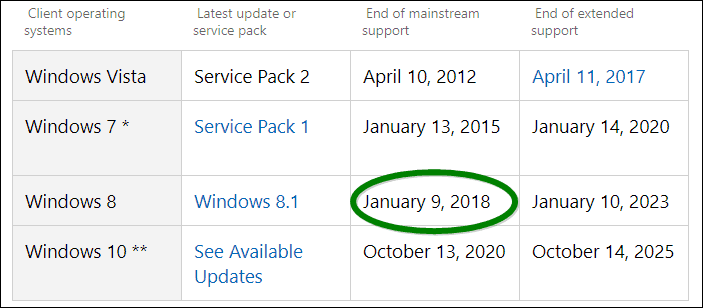The following chart is a look at the Windows Lifecycle Fact Sheet from Microsoft that shows mainstream support ended this past Tuesday: While this isn’t the death of Windows 8.1 by any means, it is a step closer to phasing out the touch-centric OS that very few people adopted. Most users, especially companies, have stayed with Windows 7 or took the upgrade path directly to Windows 10. According to Statcounter by Global Stats, Windows 7 and Windows 10 have an equal footing with both having a 42 percent desktop market share. While Windows 8.1 is currently only sitting at a meager 9 percent of overall share. If you are still on Windows 8.1, and happy with it, there is no urgent need to change your system. However, if you do want new and better feature support, check out our article on how to upgrade from Windows 8.1 to Windows 10. Microsoft is treating Windows 10 like a service and it continues to receive major feature updates twice a year. Currently, Windows Insiders are testing out some exciting new experiences like Windows Timeline and Sets features. Speaking of Windows versions that didn’t receive much adoption or fanfare, Microsoft ended all support for Vista last year. This past year was the end of other Microsoft products, too. Check out our article on Microsoft technologies that died in 2017. Are you still using Windows 8.1 and are you planning to upgrade? Let us know your thoughts in the comment section below. Or, for more discussion all things Microsoft, head to our Windows 10 Forums. Comment Name * Email *
Δ Save my name and email and send me emails as new comments are made to this post.
![]()


